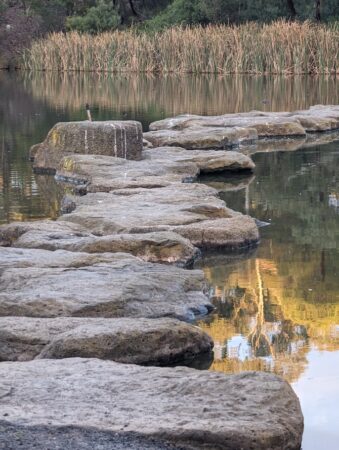By Dominique Hes
When we think of regeneration we think about a forest after a fire or restoring land after a flood. But what does regeneration mean for our cities and communities?
A regenerative approach to urban design ensures a place is healthy enough, vital enough, and resilient enough to weather change and come out even better and stronger than before. That means investment in people, relationships and connection.
When a place has these qualities people care for their place and will take more effort to look after it. Yet often we design for the mythical ‘normal person’ with an average height, culture, behaviour, health and ability when we need to design for everyone.
In today’s world, ensuring accessibility and inclusivity is more than a legal requirement; it’s a powerful way to create environments where everyone feels welcome and can fully participate.

It’s about removing barriers, both physical and digital, so that people of all abilities can access, engage with, and benefit from the world around them. It’s about fostering inclusion and belonging, enabling everyone to feel a part of the community, no matter their abilities.
Yet there is nuance in this. For example, at Newport Lakes Reserve there are some steep slopes and there are stepping stones. These are not accessible to everyone. Yet both the cliffs and the stepping stones are part of the magic of the place. So how, from a regenerative perspective, do we honour the nature of a place while enabling equitable participation in its magic?
Put simply, accessibility isn’t access for everyone to everything, but access to the things that enable them to feel belonging and connection.
This requires conversations which include all parts of society, not just designers, in order to discover different needs. The feeling of belonging can be supported by design, but it is much more about having agency and being part of the design conversation.
Creating accessible environments requires a collective effort; from businesses, policy makers, organisations, and individuals, to advocate for inclusive spaces.
For example, businesses can ensure that their premises are accessible by installing ramps and providing clear signage. Event organisers can make their gatherings inclusive by offering sign-language interpreters and ensuring that venues have accessible seating.
Designing for accessibility is about recognising the inherent dignity of all people. This fosters a sense of belonging and inclusion. Accessible design doesn’t just benefit people with disabilities; it enriches society as a whole. Thinking of everyone creates a richer, more diverse environment where different perspectives and experiences are valued. It allows people of all backgrounds to interact, share ideas, and collaborate.
This means in times of crisis and change, the community can work together and support each other.

